Whether you are on vacation, working from home, do not have child care, or hate the gym, you can get stronger with resistance bands. You will only require a few feet of space so I am taking away all your excuses. I will walk you through five of my favorite exercises. Bands can be purchased at most stores and websites that sell fitness gadgets. And if you know any physical therapists, we love to give out bands so just ask!
If you are wondering how many repetitions you should do and how frequently, that is a good question. It depends on your current fitness level. You want to perform exercises slowly, with intention to use the correct muscles while keeping a strong core. Performing 5 repetitions with good form is more beneficial than rushing through 20 repetitions poorly.
Tips: Use mirrors to check your posture. Engage your core. Use your breaths to help you as you exhale on the hard part of the exercise. Visualize the muscles you’re strengthening and make sure you feel them working.
1. Shoulder Blade Stabilization:
If you feel frustrated with your slumped sitting posture, engage your rhomboids and improve your posture while decreasing your risk of shoulder injuries.
With moderate resistance in band, squeeze your shoulder blades together without arching your back.
Release slowly, keeping tension in the band throughout exercise. Tuck butt under and engage core. Keep shoulders back and down, away from your ears. Can do this while sitting, kneeling, or standing.

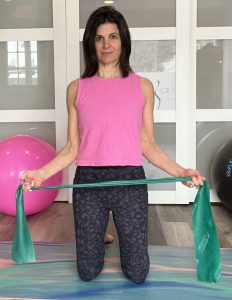
2. Triceps
This three-headed muscle takes up 60-70% of your upper arm and provides stability to your elbow and shoulder joints. Hold both ends of resistance band behind you, vertically. Upper hand is behind your neck and lower hand is placed at your low back. Pull hands away from each other, increasing resistance of band as you extend your elbows and strengthen your triceps.
Key tips: Keep elbows close to your head and body as you extend your arms. Can do kneeling, sitting, kneeling, or standing.
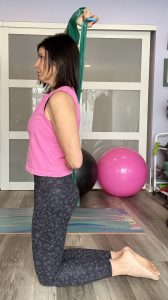
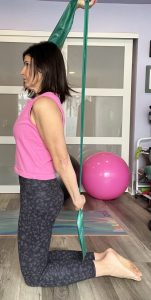
3. Latissimus dorsi and paraspinal muscles
These muscles provide stability throughout your spine and upper body, allowing you to move and stand tall.
Lie prone with arms and legs lifted off floor. Keep head and neck in neutral posture so you do not strain your shoulders. Hold band in both hands overhead with raised upper body. Alternate pulling each arm down (elbow is now bent) towards your butt, turning towards the side you are strengthening.
Key tips: You should feel this in your shoulder blades, upper back, and lower back. You can perform this exercise without raising your legs if too challenging or you feel low back pain.

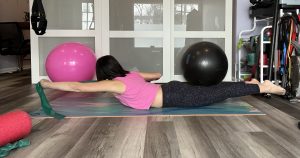
4. Glutes:
You can’t neglect your largest muscles in the human body! Strengthening you glutes will help you avoid back and knee injuries and improve your athletic performance.
Stand tall with butt tucked under and abdominals engaged. Wrap band around your ankles.
Can hold onto wall or piece of sturdy furniture for balance.
Stabilize yourself on one leg and squeeze your glutes before extending the other leg back.
You will feel this in outer hip of your standing leg (gluteus medius) and back of your extending leg (hamstrings and gluteus maximus).
Key tips: Can slightly bend standing leg. Make sure to stand tall and don’t lean forward while extending leg behind you. That’s cheating!
. 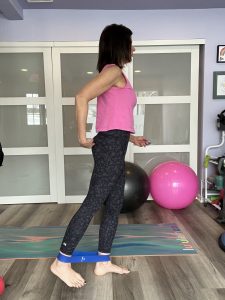

5. Abdominal muscles:
Strengthen your core to avoid low back pain and injuries while improving your spinal stability, balance, and posture. You don’t want to miss this one! Come down to the floor into a quadruped position with knees aligned under hips and hands aligned under shoulders. Wrap band around legs, just above knees.
Don’t let your back extend or twist in this position. Maintain a strong engaged core while keeping head and neck in a neutral position. Your facial muscles should be relaxed and your gaze should be in front of your hands.
Tuck your toes under and lift your knees slightly off the floor, pushing outer thighs against the band.
Key Tips: Don’t shift weight forward or backwards as you lift your knees. You don’t have to lift knees very high up off the floor

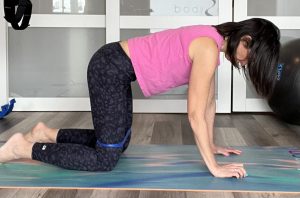
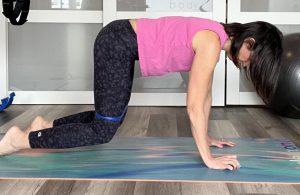
Give these a shot – start with a couple repetitions or a few seconds. You can increase your repetitions as you feel stronger
